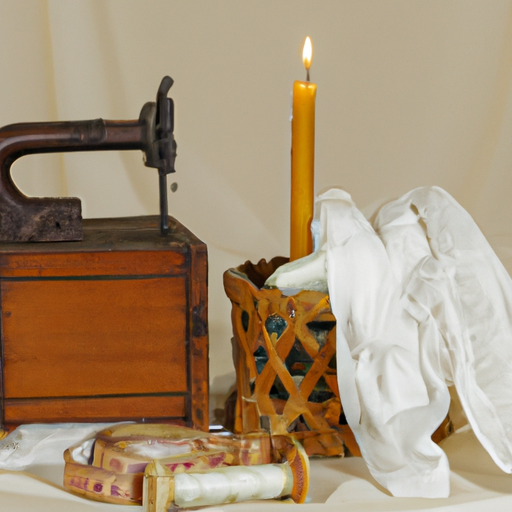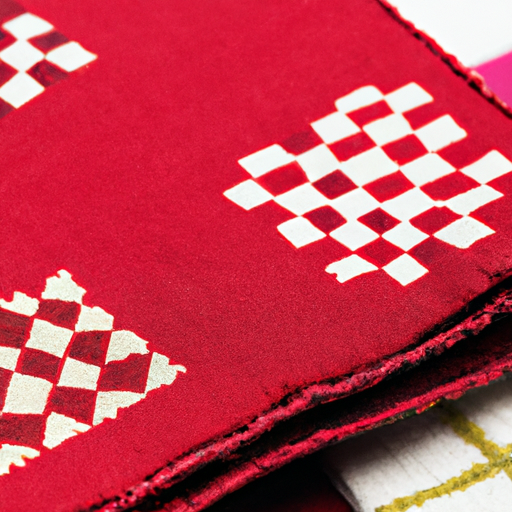
How did the Europeans use quilted items?
As I gaze at the intricate patterns and vibrant colors of a vintage European quilt, I can’t help but wonder about its history. How many hands lovingly stitched each square together? How many precious memories were woven into its fabric? Most importantly, how did the Europeans use quilted items beyond just their practical purposes? Join me on a journey through time as we explore the emotional significance behind these mesmerizing textiles. From practical warmth on cold winter nights to cherished family heirlooms, these quilted artifacts are imbued with stories of love, loss, and everything in between. Let’s peel back the layers and uncover the hidden meanings behind this beloved European tradition.
1. The Rich Tapestry of European History: Uncovering the Hidden Role of Quilted Items
**Quilted Items: An Underrated Hero of European History**
From grand royal courts to humble peasant homes, quilted items have served a critical role in Europe’s fascinating history. Despite often being overlooked, quilted textiles have woven together the fabric of European society. Let’s delve into the rich tapestry of European history as we uncover the hidden role of quilted items.
**The Power of Quilted Textiles**
Throughout history, quilted textiles have been more than just a practical solution for warmth or comfort. They have been powerful symbols of wealth, power, and artistry. From exquisite robes made for royalty to patchwork blankets crafted by commoners, quilted items tell unique stories of European society’s diversity.
**Quilted Textiles and Cultural Identity**
Quilted items have played an instrumental role in preserving Europe’s cultural identity. Whether through the iconic French boutis or the intricate Hungarian kalocsai technique, quilting has produced distinct art forms unique to each European country. Quilted textiles have helped to shape cultural identity by creating a visual representation of European heritage.
**The Hidden Stories of Quilted Items**
Quilted items are much more than just a work of art. They are relics of the people who crafted them and the society they lived in. Quilted textiles can unlock stories of migration, economic development, and social unrest that have shaped European history. The stories of quilted items are hidden within their stitches, waiting to be uncovered.
In conclusion, quilted items may have played an underrated role in European history, but their impact on European society is undeniable. Through the preservation of cultural identity and the hidden stories within their stitches, quilted textiles have contributed greatly to the rich tapestry of European history.
2. From Battlefields to Bedrooms: Exploring the Versatility of European Quilts
Through the ages, quilts have served a multitude of practical and inspiring purposes. They have kept soldiers warm on cold, brutal battlefields and comforted families during long, harsh winters. But the true versatility of European quilts reaches far beyond simple functionality, as they carry within them the stories and experiences of generations.
The art of quilt-making has always been a deeply personal, emotional endeavor. Every stitch, every color choice, every pattern has meaning and significance. From intricate floral designs to bold geometric shapes, each quilt reflects the unique history and culture of its creator.
One of the most fascinating aspects of European quilts is their ability to bridge the gap between the battlefield and the bedroom. From the military tents of Napoleon’s army to the cozy cottages of the English countryside, quilts have traveled far and wide, bearing witness to the triumphs and tribulations of countless lives.
Perhaps the most poignant example of this versatility is the use of quilts during times of war. During the Second World War, American soldiers would often request quilts made by their families and loved ones, using them as a source of comfort and inspiration whilst stationed overseas. In turn, the quilts themselves became symbols of hope and resilience, reminding soldiers of the love and support waiting for them at home.
Though quilt-making may seem like a quaint, antiquated craft to some, its significance and impact on European culture cannot be overstated. These humble pieces of fabric have served as witnesses to some of history’s greatest triumphs and tragedies, and continue to inspire and comfort people around the world today.
3. A Stitch in Time: The Revolutionary Impact of Quilted Clothing on European Society
Quilted clothing doesn’t just shield you from the cold, it has influenced western society in ways that we couldn’t even anticipate. The art of quilting is a centuries-old practice that has transcended generations and borders. Quilting was initially born as a necessity, a way of utilizing scraps of fabric to create a warm cover. But as it evolved, it became a conduit for creativity, and cultural expression.
For centuries, quilted clothing has provided essential warmth in Europe’s bitter winters, but its impact goes far beyond that. Quilting played an essential role in social and cultural exchanges in European history. Quilted clothing was more than just a functional item; it became a vehicle for the expression of identity and creativity.
During the Renaissance, quilting began to be used for garments such as doublets, jackets, and bed linens, which gave it a more sophisticated and noble connotation. This signaled a shift in the way people perceived it and contributed to its widespread popularity. This popularity created an industry that allowed people from all classes and backgrounds to wear quilted clothing, further cementing its place in the society and making it a common fashion trend even today.
In the United States, quilting was a popular pastime for women which allowed them an opportunity to showcase their skills, creativity and tell their stories through their craft. In turn, this facilitated a way for women to come together, bond, and fight for societal change. The work of these women, the quilts they created, and the rallies and movements they instigated have played a significant part in the history of the United States.
In conclusion, quilted clothing has a rich history and continues to serve as a conduit for self-expression, creativity, and cultural exchange. Its impact on society extends beyond functionality and fashion, but also has played an integral role in the formation of social movements. The value of quilting is undeniable, and it will forever be an essential part of our heritage and identity.
4. Crafting a New Identity: How Quilting Became a Symbol of European Nationalism
Quilting, a seemingly innocuous craft, has played a significant role in shaping the identity of many European nations. While quilting has been a traditional craft amongst many cultures, it was in the late 19th century that the practice of quilting gained political significance in Europe.
Quilts became a symbol of nationalism during this time, with each nation using quilting patterns to represent their unique identity. Germany, for instance, drew inspiration from traditional Bauhaus designs, which represented their modern, progressive nature. France, on the other hand, used intricate embroidery and lacework to reflect their romantic and artistic nature.
Not only did quilting showcase national pride, but it also became a symbol of women’s empowerment. As women had greater influence in politics and society, so too did their role in crafting the nation’s identity grow stronger. Quilting circles became a space for women to connect and discuss their vision for their country’s future, bringing about a sense of camaraderie and sisterhood.
Quilting’s significance in shaping Europe’s identity remains relevant to this day. As nations continue to explore their past and present, quilting serves as a reminder of their unique place in the world. With each stitch, a story is woven, and a nation’s identity is strengthened. In a world that is increasingly defined by division, quilting offers a beacon of hope by reminding us of the beauty that can emerge from diversity.
5. Quilting Through Adversity: How Europeans Found Solace and Strength in Their Needlework
Quilting has been a beloved art for centuries, spanning across continents and cultures. But did you know that quilting played an important role in the lives of European women during times of adversity?
During times of war and hardship, European women often turned to quilting as a way to find solace and strength. Stitch by stitch, they poured their emotions and energies into their needlework, finding a sense of purpose and accomplishment amidst the chaos.
For many women, quilting was not just a hobby, but a lifeline. It allowed them to connect with other women and bond over a shared passion, even in times of isolation and hardship. Through their needlework, they were able to create something beautiful and meaningful, reminding them of the hope and resilience that lies within all of us.
Many of these quilts were not just beautiful, but deeply symbolic. They often incorporated patriotic imagery, religious symbols, or personal messages of hope and love. These quilts were a way to express themselves, to assert their identity and values, and to resist the forces that sought to silence them.
Today, we can still see the legacy of these brave women in the quilts they left behind. Each stitch is a testament to their strength, their creativity, and their unwavering spirit. As we admire their work, we are reminded of the power of needle and thread to heal, inspire, and unite us all.
6. Piecing Together the Story: The Enduring Legacy of European Quilting Culture
The history of European quilting culture is a beautiful tapestry of art, tradition, and community. Through the intricate stitches and carefully chosen fabrics, each quilt tells a unique story that has been passed down from generation to generation. As we piece together the story of European quilting culture, we uncover its enduring legacy that has touched the lives of so many.
Quilting has always been more than just a hobby or a craft. It has been a means of survival, a form of expression, and a way of connecting with others. For centuries, women have used quilts as a form of storytelling and a way of documenting their lives. The fabrics chosen for a quilt often reflect the cultural and social values of the time, making each quilt a glimpse into the past.
The beauty of European quilting culture lies not only in the finished product but in the process itself. Quilting was often done in groups, providing a sense of community and belonging for those involved. Women would gather to work on quilts together, sharing stories, laughter, and tears. The act of quilting was a way of coming together, strengthening relationships and building a sense of unity.
The legacy of European quilting culture can still be seen today, as traditional patterns and techniques continue to be passed down. Quilting has even become a means of social justice, with groups using it as a way to raise awareness and funds for various causes. The enduring legacy of European quilting culture is one of connection, art, and tradition. As we piece together the story of this beautiful craft, we are reminded of the power of community and the importance of storytelling. As we conclude our journey into the world of quilted items, it’s impossible not to feel a sense of awe and admiration for the European pioneers who brought us such incredible advancements. These meticulous craftspeople transformed strips of fabric and thread into durable, beautiful blankets that have brought comfort and warmth to countless generations. Beyond its functional use, quilting became a beloved art form and a powerful symbol of community and resilience. Through political and social disruptions, wars and pandemics, and times of great prosperity, Europeans have relied on quilted items to connect with their past and propel them into a brighter future. So, as we part ways, let’s take a moment to celebrate the incredible legacy of quilted items and the passionate, innovative people who created them.